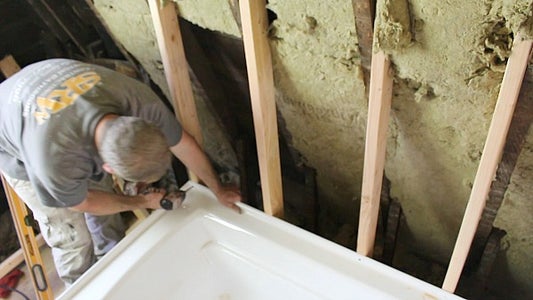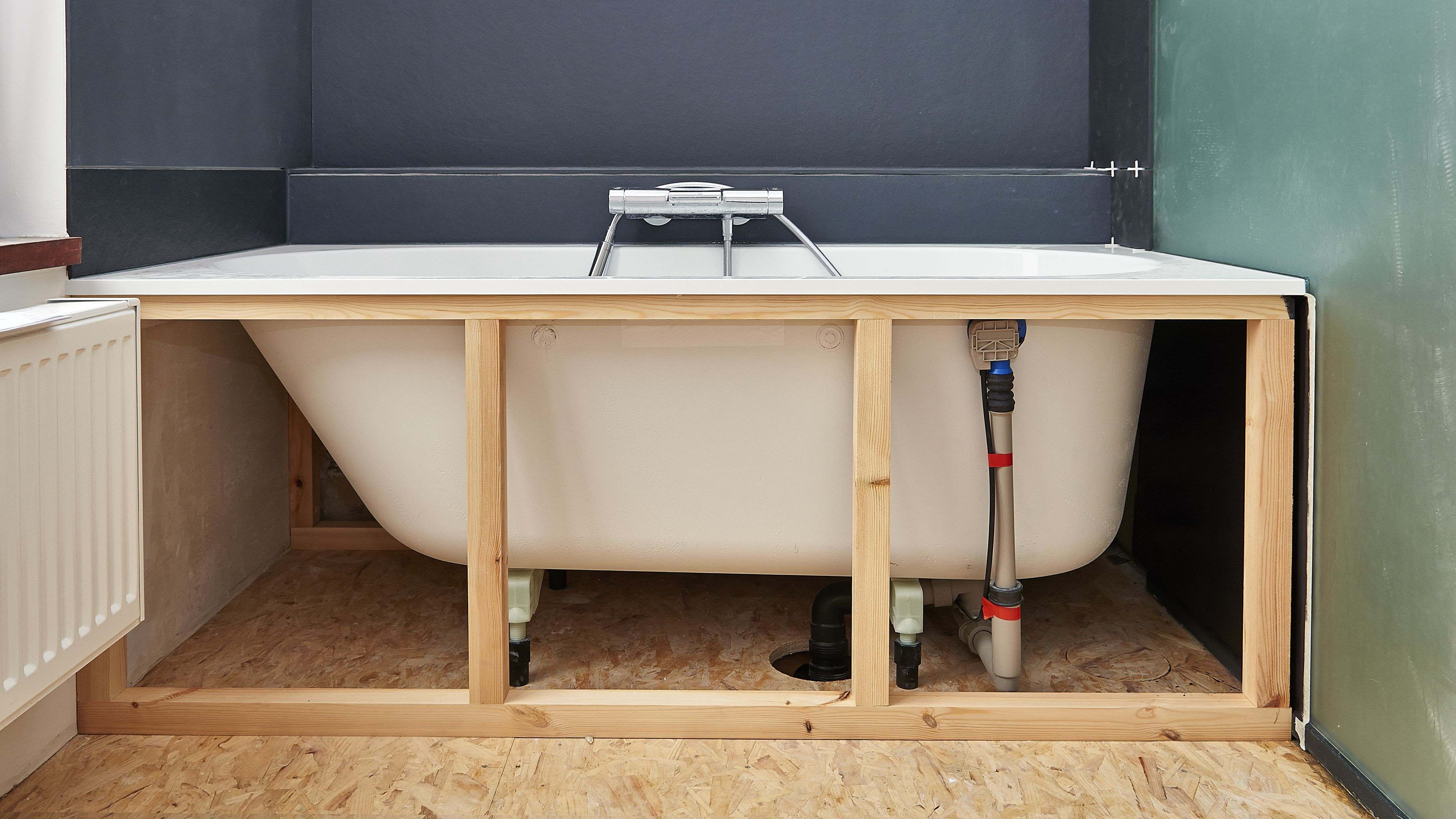This great article listed below relating to Tools You Need to Install a New Bathtub is incredibly entertaining. Read it for yourself and see what you think of it.

Setting up a bathtub isn't precisely rocket science, however it does require strong plumbing, woodworking, as well as occasionally, tiling skills. Changing an old bathtub with a brand-new one is also a reasonably difficult job. If the old bathtub is readily easily accessible, the task can move immediately; if you need to open a wall surface to get rid of the old bathtub and position the brand-new bathtub, the task is a lot harder. In either instance, the project is within a house handyman's abilities, although you will certainly need a helper to vacate the old bathtub and set in the brand-new one. Make certain you have actually certified yourself for the job as well as fit trying it. Rather than employing a contractor to take over a halfway-completed job, it is far better to take into consideration employing one before you begin. Possibilities are you might require a specialist plumber to make tube connections.
This article will assist you set up a new tub in your shower room if you have actually currently acquired a brand-new bathtub and don't need to transform the setup of your previous water supply pipes.
Your tools and material checklist should comprise the following:
Planning for the Installment
To start with, the sustaining frame supplied with the bathroom needs to be fitted (if required) according to the supplier's instructions. Next off, fit the taps or mixer to the bathtub. When fitting the faucet block, it is essential to make sure that if the faucet features a plastic washing machine, it is fitted between the bathroom and the taps. On a plastic bath, it is likewise practical to fit a supporting plate under the taps unit to stop strain on the tub.
Fit the adaptable tap connectors to the bottom of both faucets making use of 2 nuts as well as olives (occasionally provided with the tub). Fit the plug-hole outlet by smearing mastic filler round the sink outlet hole, and after that pass the electrical outlet with the hole in the bath. Utilize the nut supplied by the producer to fit the plug-hole. Analyze the plug-hole outlet for an inlet on the side for the overflow pipe.
Next off, fit completion of the versatile overflow pipe to the overflow outlet. After that, screw the pipe to the overflow face which should be fitted inside the bathroom. See to it you make use of every one of the provided washers.
Link the catch to the bottom of the waste outlet on the tub by winding the thread of the waste electrical outlet with silicone mastic or PTFE tape, and also screw on the catch to the outlet. Attach all-time low of the overflow tube in a similar manner.The bath ought to now be ready to be suited its final setting.
Removing Old Taps
If you require to replace old faucets with new ones as a part of your installation, after that the first thing you must do is separate the water. After doing so, turn on the taps to drain pipes any type of water continuing to be in the system. The process of removing the existing faucets can be rather troublesome due to the limited accessibility that is usually the situation.
Utilize a basin wrench (crowsfoot spanner) or a faucet tool to undo the nut that attaches the supply pipes to the taps. Have a towel prepared for the remaining water that will certainly come from the pipes. As soon as the supply pipelines have actually been removed, utilize the same device to loosen up the nut that holds the taps onto the bath/basin. You will certainly need to quit the solitary taps from transforming during this procedure. When the taps have actually been removed, the holes in the bath/basin will certainly have to be cleansed of any type of old sealing substance.
Before moving on to fit the brand-new faucets, compare the pipe connections on the old faucets to the brand-new taps. If the old faucets are longer than the new taps, then a shank adapter is needed for the new taps to fit.
Mounting the Tub
Using both wooden boards under its feet, place the bath tub in the needed position. The wood boards are useful in evenly spreading out the weight of the bathtub over the location of the boards instead of concentrating all the weight onto 4 little points.
The following goal is to make certain that the bathtub is leveled all round. This can be attained by inspecting the level as well as adjusting the feet on the tub until the level reads degree.
To install faucets, fit the bottom of the outermost flexible faucet connector to the suitable supply pipeline by making a compression join; then do the very same for the other tap.
Switch on the water and examine all joints as well as brand-new pipework for leaks and tighten them if essential. Load the bathtub as well as also inspect the overflow outlet as well as the regular outlet for leakages.
Lastly, deal with the bath paneling as described in the producer's instruction manual. Tiling as well as securing around the bath tub ought to wait until the bathtub has actually been utilized at least when as this will resolve it into its last position.
Suitable New Touches
If the tails of the new faucets are plastic, then you will certainly require a plastic port to prevent damage to the thread. One end of the port fits on the plastic tail of the faucet and also the other end supplies a link to the existent supply pipes.
If you require to fit a monobloc, after that you will need minimizing couplers, which attaches the 10mm pipe of the monobloc to the common 15mm supply pipe.
Next off, position the tap in the mounting opening in the bath/basin making certain that the washers remain in place in between the tap as well as the sink. Safeguard the faucet in position with the manufacturer supplied backnut. As soon as the tap is safely in place, the supply pipelines can be attached to the tails of the faucets. The faucets can either be attached by utilizing corrugated copper piping or with regular faucet adapters. The previous kind needs to be attached to the faucet finishes initially, tightening up just by hand. The supply pipes can later be linked to the other end. Tighten up both ends with a spanner after both ends have actually been linked.
Tiling Around the Tub
In the area where the bath fulfills the floor tile, it is required to secure the accompanies a silicone rubber caulking. This is important as the installation can relocate sufficient to split a stiff seal, causing the water to penetrate the wall in between the bathroom as well as the tiling, resulting in problems with dampness and also feasible leaks to the ceiling below.
You can choose from a selection of coloured sealers to blend in your fixtures and also installations. They are offered in tubes and cartridges, and also can sealing gaps approximately a size of 3mm (1/8 inch). If you have a larger gap to load, you can load it with twists of drenched paper or soft rope. Keep in mind to always fill the bath tub with water before sealing, to permit the movement experienced when the bathtub is in usage. The sealant can crack relatively early if you do not take into consideration this movement prior to sealing.
Conversely, ceramic coving or quadrant ceramic tiles can be made use of to edge the bathroom or shower tray. Plastic strips of coving, which are easy to use and cut to dimension, are likewise conveniently offered on the marketplace. It is recommended to fit the floor tiles using waterproof or waterproof sticky and grout.
How to Install a Freestanding Bathtub?
Installing a freestanding bathtub or any kind of bathtub is not a difficult task if you have a sophisticated guide on installing a freestanding bathtub in your bathroom. Aside from getting the freestanding bathtub to your bathroom, you can do all the work without paying a plumber. A bathroom with a bathtub is a retreat where you can feel the sensation of coming home and soaking in that hot water. It is a great way to remove all the stress from your day.
This guide will walk you through installing a freestanding bathtub in simple steps and help you find relief.
Slope
Make sure your bathroom has a proper slope. If your floor lacks a slope, the water flow to the drain will not function, which leads to a blocked drain which can cost you money. You can use the level device to see your bathroom's vertical and horizontal aspects. Once you have that information, you must carry out the next step.
Placement
A freestanding bathtub has a unique characteristic that helps you bring elegance to your bathroom. A freestanding bathtub comes in various sizes and shapes suitable for different types of bathrooms.
According to the information you gathered from the level device, you must pick a bathtub that suits your style and fits your bathroom aesthetically. You can place a freestanding bathtub virtually anywhere, such as in the corner, near the wall, or even at the center of your bathroom. However, you must ensure proper plumbing where you want to install the tub. If not, then you must call a plumber.
Clean the bathroom floor
After deciding where to place the bathtub, you must clean the entire bathroom floor so that the dust and debris do not accumulate underneath the tub. Simple cleaning is enough, and you will clean it again after the installation.
Steps to Install a Freestanding Bathtub:
STEP 1: Place the protective blanket in the adjacent area where you want to install the bathtub. It will help you protect the bathtub's sides when you do the installation.
STEP 2: Now, place the 4x4 lumber in the area where you want to install the bathtub. Place the bathtub on top of the lumber, and align the drain line with the bathtub drain.
STEP 3: A freestanding bathtub comes with a drain kit. If not, make sure you purchase one with your bathtub. You can pop that drain kit and align it with your bathroom drain line. Ensure that you tighten the drain nut enough so there is no water leakage. You must also clean the bathtub’s drain to remove the factory dirt and debris.
STEP 4: Clean the drain hole in your bathroom. It helps to do the installation without any water blockage. A drain cleaner or bleach will suffice. Once the drain dries entirely, take a small amount of clear silicon and place it around the underside of the pipe flange.
STEP 5: Attach the drain tailpiece to the bottom of the bathtub. Place the rubber or plastic bushing with the plumbing material at the top of the tailpiece and screw the drain nut up the tube until it tightens both the bathtub’s drain and the drain tailpiece. Now you must add the lubricant to the seal to ensure there is no water leakage in the pipe connection.
STEP 6: Place caulk around the bottom edge of the bathtub. Take out the lumbar support and carefully bring the bathtub to the floor. Use a damp cloth to clean the excess caulk and debris and plumber putty to cover the tub drains and the floor.
Tips to Maintain a Freestanding Bathtub:
Always look for the clog in the drain. You can pull it out with a small stick if hair or debris is in the gutter. Use mild cleaning components, which will help you preserve the bathtub for a long time and will also help you remove surface-level scratches. Do not use strong solutions such as concentrated bleach to remove stains. Instead, mix water and diluted bleach with a ratio of 10:2, respectively. Apply it to the tub's surface and leave it for 15-20 minutes to remove any surface-level stains. Always check the floor drain. You may unclog it using any small sticks or a small vacuum to suck out all the debris. Check the heater or faucet immediately if you smell rust or grease in the water. Rust in the water may stain or damage the bathtub in the long run. If you want to sand the bathtub, try using 400 grit sandpaper or 600 grit sandpaper for a more refined finish.

I stumbled upon that piece about A Step-by-Step Guide to Installing a Bathtub when perusing the search engines. Sharing is caring. You won't know, you may just be helping someone out. Kudos for your time. Come back soon.
Source
 Alana "Honey Boo Boo" Thompson Then & Now!
Alana "Honey Boo Boo" Thompson Then & Now! Freddie Prinze Jr. Then & Now!
Freddie Prinze Jr. Then & Now! Barbi Benton Then & Now!
Barbi Benton Then & Now! Karyn Parsons Then & Now!
Karyn Parsons Then & Now! Lynda Carter Then & Now!
Lynda Carter Then & Now!